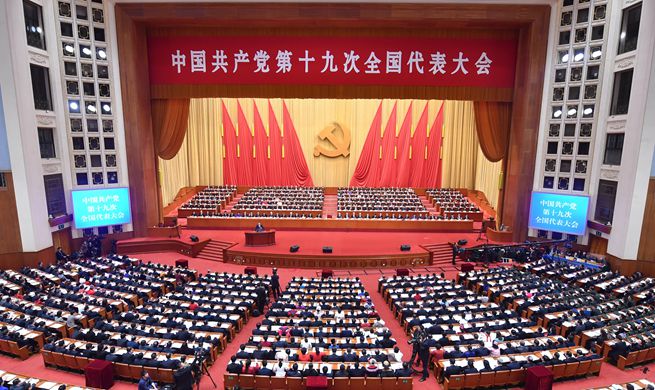by David Musyoka
NAIROBI, Oct. 19 (Xinhua) -- The Kenyan government has embarked on a new formula of funding higher learning institutions, but universities are not taking it well.
Known as the Differentiated Unit Cost (DUC), the formula involves funding universities based on the courses they offer and is done through the Universities Funding Board.
The formula, which took effect last month, has caused jitters among some universities that are grappling with financial constraints.
University managers are, however, not happy with the formula noting it causes financial burden on the institutions and as a result they are forced to rely on donors to fund their research.
However, government agencies in the education sector have disputed the claims, saying that the new formula offers transparency and fairness in funding.
Commission for University Education chairman Chacha Nyaigotti-Chacha said Thursday the university funding DUC is likely to revolutionize the funding dynamics as the implementation takes shape.
"As you are aware, the model took off with the recent intake (May/September) and is picking up well as each university is now able to account for the funding disbursed by the government," Chacha said in an interview.
He urged all universities to compile new enrolment figures to include bio-data of students, programs they pursue and date of enrolment. This, he said is aimed at updating the numbers from the institutions.
But according to some managers of universities, the new model may be short lived.
The government idea of funding universities based on the courses they offer is illogical. In the case of social sciences, which get little funding compared with medical science courses yet attract three quarter of the population of universities, said a professor of one of the local universities who prefered to be annoymous.
He noted that the new formula, which also uses students' enrollment numbers, means the more students a university enrolls, the higher the funding and vice-versa.
This according to him, has caused uncertainty in terms of execution of research, which is the core mandate of universities.
Initially, the government would allocate 1,142 U.S. dollars for each student regardless of academic program annually. This has been drastically lowered to 666 dollars per student.
In the DUC model, all university academic programs have been grouped into 14 clusters and the cost of teaching each fixed.
Dentists will require the highest allocation of 5,714 dollars per academic year. The money will be spent on purchasing all teaching requirements and remunerating the lecturers while medicine students will require 5,485 dollars per year, per student.
Arts (general) will be offered 1,371 dollars per student per year. This means institutions that offer arts programs will get less funding compared to the ones offering technical and science programs.
Chacha said quality output of any university will be the differentiating factor for universities, not the numbers they command especially in the latest prevailing circumstances.
"Following the recent happenings in the sector including the outcome of the secondary examination results announced, it is time for universities to honestly assess themselves and realize where their quality standing is," he added.

















